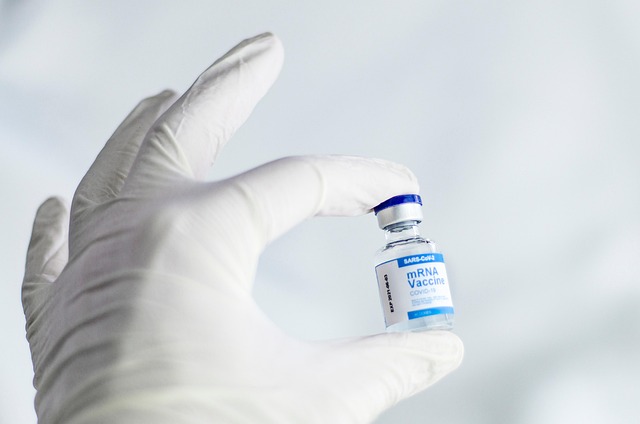The Link Between Radiation and Prostate Cancer: Insights from Studies
Delve into the latest studies exploring the connection between radiation and prostate cancer in the US. Discover valuable insights that shed light on this crucial health topic and its implications. Gain a deeper understanding of the research findings and their potential impact on treatment and prevention strategies.

How does radiation exposure potentially affect prostate cancer risk?
Radiation exposure has long been a concern in cancer research, and its potential impact on prostate cancer risk is no exception. Studies have shown that high levels of ionizing radiation can damage DNA and potentially lead to the development of various cancers, including prostate cancer. However, the relationship between radiation and prostate cancer is not straightforward, and research findings have been mixed.
Some studies suggest that occupational exposure to low-dose radiation over extended periods may increase the risk of prostate cancer. For instance, workers in nuclear power plants or radiologists who are consistently exposed to low levels of radiation have shown slightly elevated rates of prostate cancer in certain studies. However, it’s important to note that these findings are not conclusive, and more research is needed to establish a definitive link.
What do recent studies reveal about radiation-induced prostate cancer?
Recent studies have provided more nuanced insights into the potential relationship between radiation exposure and prostate cancer. A large-scale cohort study published in the Journal of the National Cancer Institute examined the incidence of prostate cancer among atomic bomb survivors in Japan. The researchers found a small but statistically significant increase in prostate cancer risk among men exposed to higher levels of radiation.
Another study, conducted by researchers at the University of California, San Francisco, investigated the effects of low-dose radiation exposure on prostate cancer risk in a cohort of radiologic technologists. The findings suggested a modest increase in prostate cancer risk among technologists who began working before 1950 when radiation protection standards were less stringent. However, the study also noted that the risk was not significantly elevated for technologists who started working after 1960, highlighting the importance of improved radiation safety protocols.
Are there specific types of radiation more strongly linked to prostate cancer?
While various forms of radiation have been studied in relation to prostate cancer, some types have shown stronger associations than others. Ionizing radiation, which includes X-rays, gamma rays, and cosmic radiation, has been the primary focus of research due to its ability to damage DNA directly.
A study published in the journal Radiation Research examined the effects of different types of ionizing radiation on prostate cancer risk. The researchers found that high-linear energy transfer (LET) radiation, such as alpha particles, may pose a greater risk for prostate cancer development compared to low-LET radiation like X-rays or gamma rays. This finding suggests that the type and quality of radiation exposure may play a crucial role in determining its potential impact on prostate cancer risk.
How does radiation therapy for prostate cancer factor into this discussion?
Interestingly, while some studies explore the potential risks of radiation exposure, radiation therapy remains a crucial and effective treatment option for prostate cancer. External beam radiation therapy and brachytherapy are commonly used to target and destroy cancer cells in the prostate gland. The controlled and targeted nature of these treatments differs significantly from environmental or occupational radiation exposure.
Recent advancements in radiation therapy techniques have led to improved outcomes and reduced side effects for prostate cancer patients. For example, intensity-modulated radiation therapy (IMRT) and proton beam therapy allow for more precise targeting of cancer cells while minimizing damage to surrounding healthy tissue. These developments underscore the importance of distinguishing between therapeutic radiation use and uncontrolled exposure when discussing radiation’s impact on prostate cancer.
What unique insights have emerged from US-based studies on this topic?
US-based research has contributed significantly to our understanding of the relationship between radiation and prostate cancer. A study conducted by the National Cancer Institute examined prostate cancer incidence among US radiologic technologists and found no significant increase in risk for those who worked with medical radiation after 1960. This finding aligns with improved radiation protection measures implemented in healthcare settings over the past several decades.
Another notable US study, published in the journal Cancer, investigated the potential link between radon exposure and prostate cancer risk. Radon, a naturally occurring radioactive gas, has been associated with lung cancer, but its impact on prostate cancer was less clear. The researchers found no significant association between residential radon exposure and prostate cancer risk, providing valuable insights into environmental radiation sources and their potential health effects.
How can these findings inform prostate cancer prevention and treatment strategies?
The insights gained from these studies have important implications for both prostate cancer prevention and treatment strategies. While the evidence linking radiation exposure to increased prostate cancer risk is not conclusive, the findings underscore the importance of minimizing unnecessary radiation exposure, particularly in occupational settings.
For individuals working in fields with potential radiation exposure, adhering to safety guidelines and using proper protective equipment is crucial. Regular health screenings and prostate cancer screenings may also be advisable for those with a history of significant radiation exposure.
In terms of treatment, the effectiveness of radiation therapy for prostate cancer remains well-established. The ongoing refinement of radiation therapy techniques continues to improve outcomes and reduce side effects for patients. However, the potential long-term effects of therapeutic radiation exposure on overall health should be considered and discussed with healthcare providers when making treatment decisions.
As research in this field progresses, it is likely that we will gain an even deeper understanding of the complex relationship between radiation and prostate cancer. This knowledge will continue to inform prevention strategies, guide occupational safety measures, and contribute to the development of more effective and safer treatment options for prostate cancer patients.
This article is for informational purposes only and should not be considered medical advice. Please consult a qualified healthcare professional for personalized guidance and treatment.




